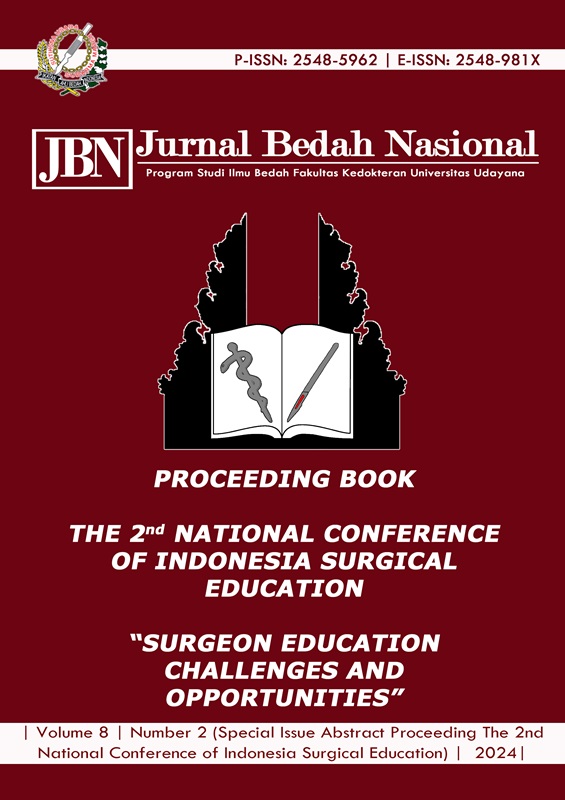044. Unlocking The Potential: Comparing The Effects of Probiotics Alone and in Combination with Capecitabine Against Colorectal Cancer in Rats
Abstract
Background: Colorectal cancer (CRC) is a leading cause of cancer deaths globally. While capecitabine is an effective chemotherapy for CRC, its use is limited by side effects and resistance. This has sparked interest in combining capecitabine with natural therapies, such as probiotics from dadiah, a traditional West Sumatra fermented buffalo milk. Lactococcus lactis strains D4 in dadiah produce nisin and butyrate, both known for their anti-cancer properties. To compare the effects of Lactococcus lactis D4, capecitabine, and their combination on CRC progression in a rat model induced with 12-Dimethylhydrazine (DMH). Methods: A total of 25 male Sprague-Dawley rats were divided into five groups: negative control, CRC-induced positive control, probiotics, capecitabine, and combination. After CRC induction, the rats received treatment for 14 days. Nuclear factor kappa B (NFKB) (inflammation), tumor protein 53 (P53) (apoptosis), and Cyclin D (proliferation) expressions were measured using immunohistochemistry. Results: The combination group showed the greatest reduction in NFKB expression compared probiotics-only and capecitabine-only (12.99 ± 4.91 vs 24.15 ± 5.50 vs 16.07 ± 3.79) (p < 0.001); P53 expression increased in the probiotic and capecitabine groups but decreased in the combination group (3.60 ± 3.50 vs 4.40 ± 4.27 vs 3.00 ± 2.00); and Cyclin D was lower in the combination group compared both the probiotic and capecitabine groups (11.68 ± 4.78 vs 21.98 ± 6.05 vs 12.16 ± 4.65). Conclusion: Lactococcus lactis D4 combined with capecitabine synergistically reduces inflammation and cell proliferation in CRC, indicating potential as an adjunct therapy to enhance chemotherapy efficacy.
Downloads

This work is licensed under a Creative Commons Attribution 4.0 International License.
Program Studi Ilmu Bedah Fakultas Kedokteran Universitas Udayana. 
This work is licensed under a Creative Commons Attribution 4.0 International License.






